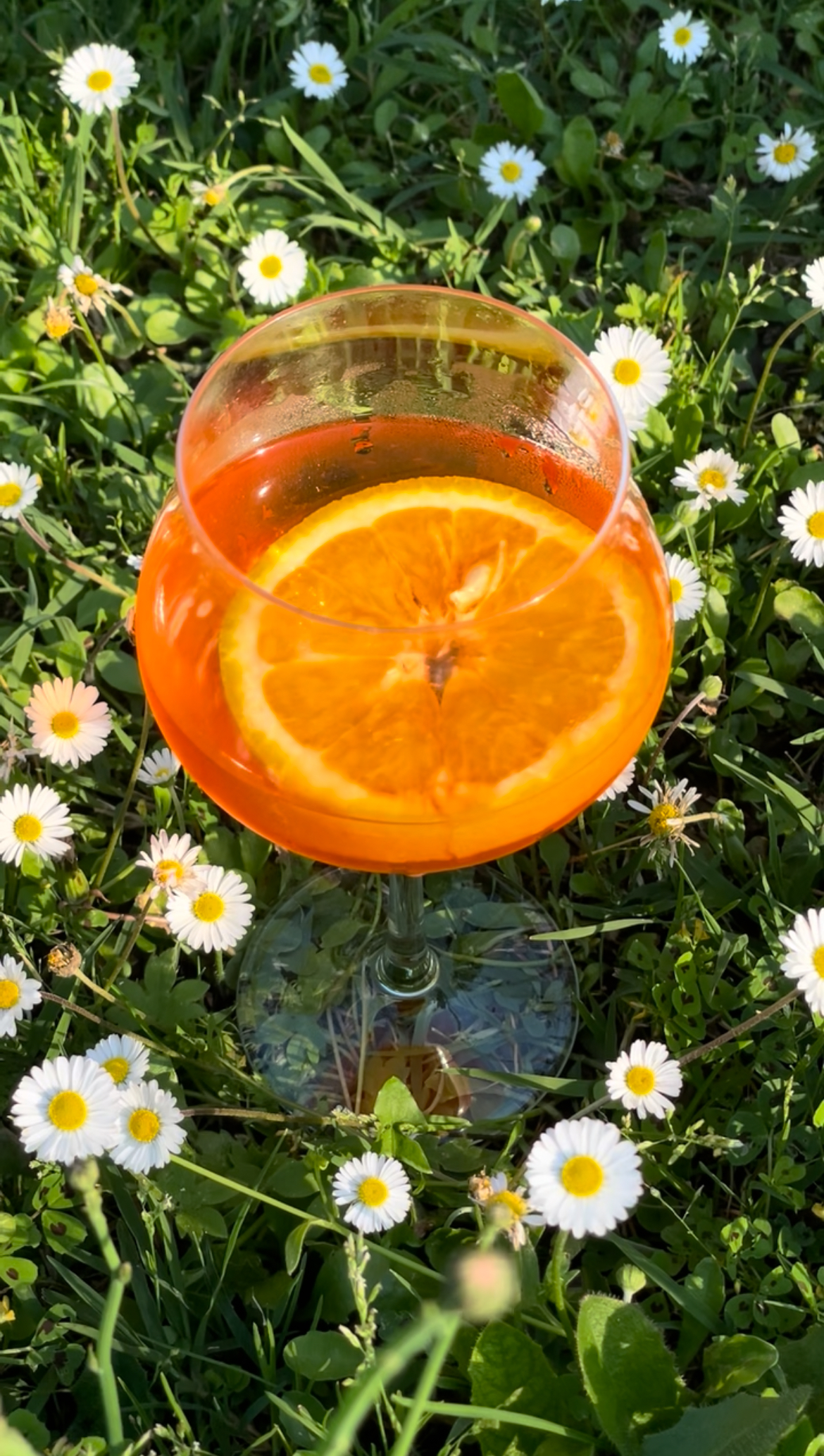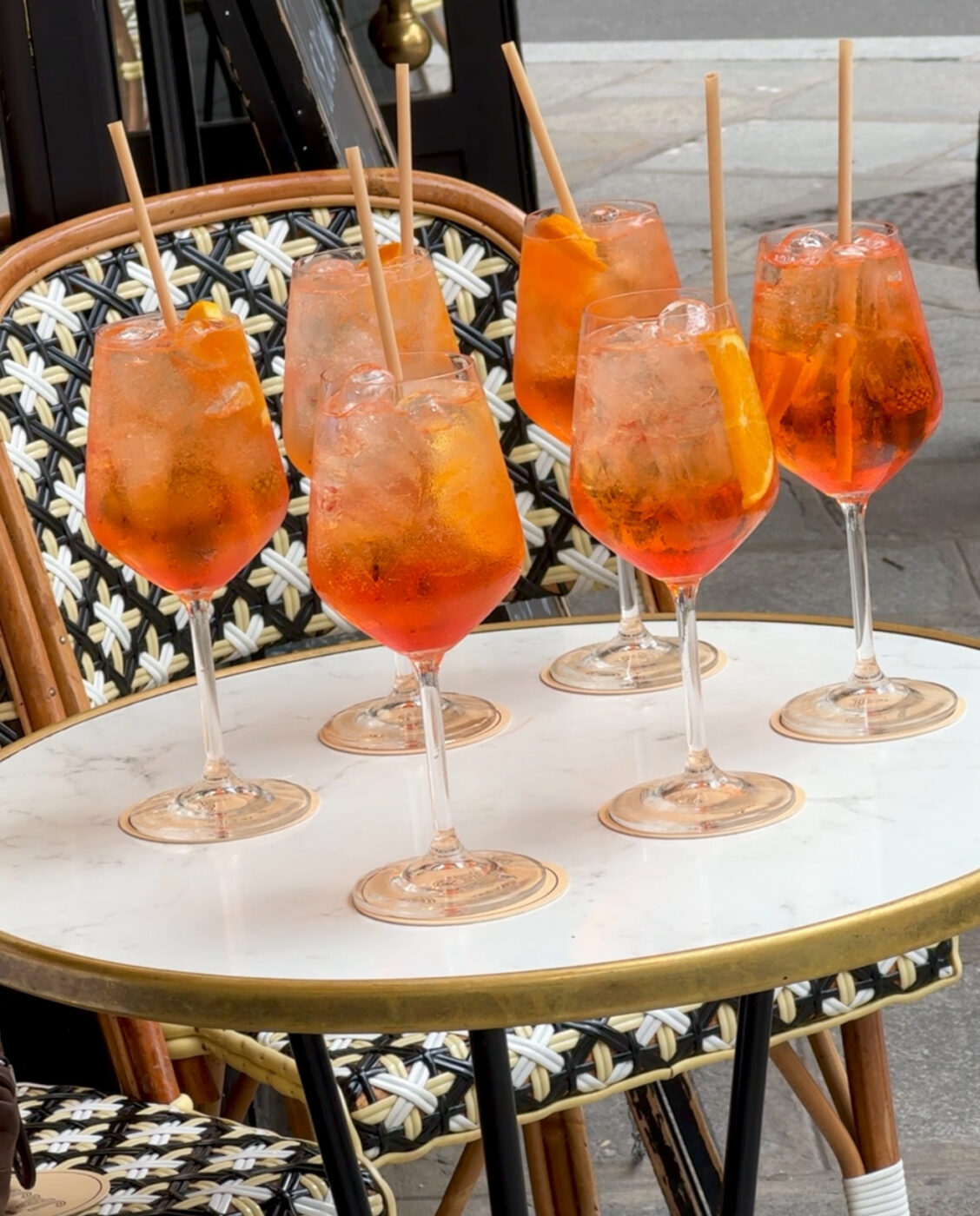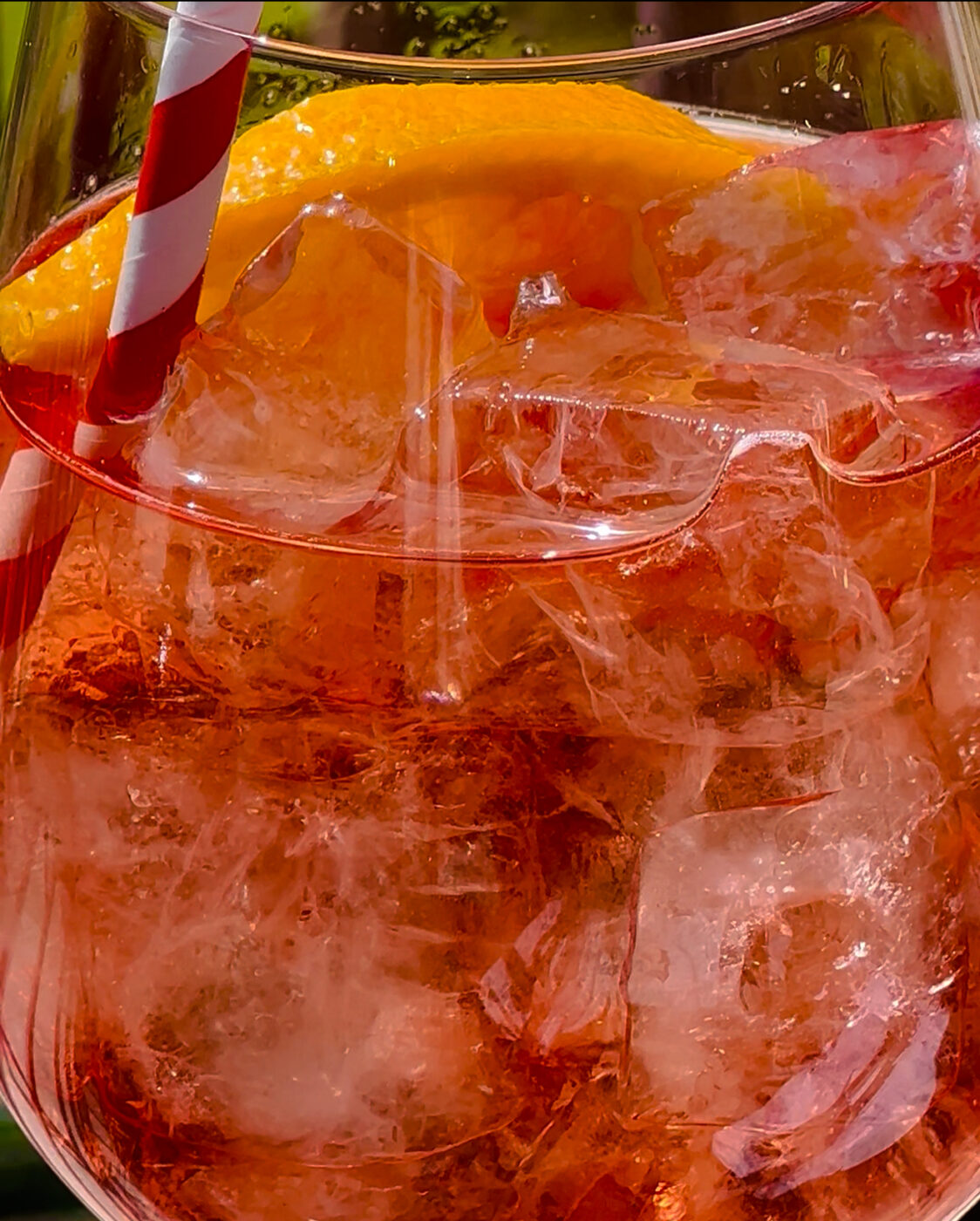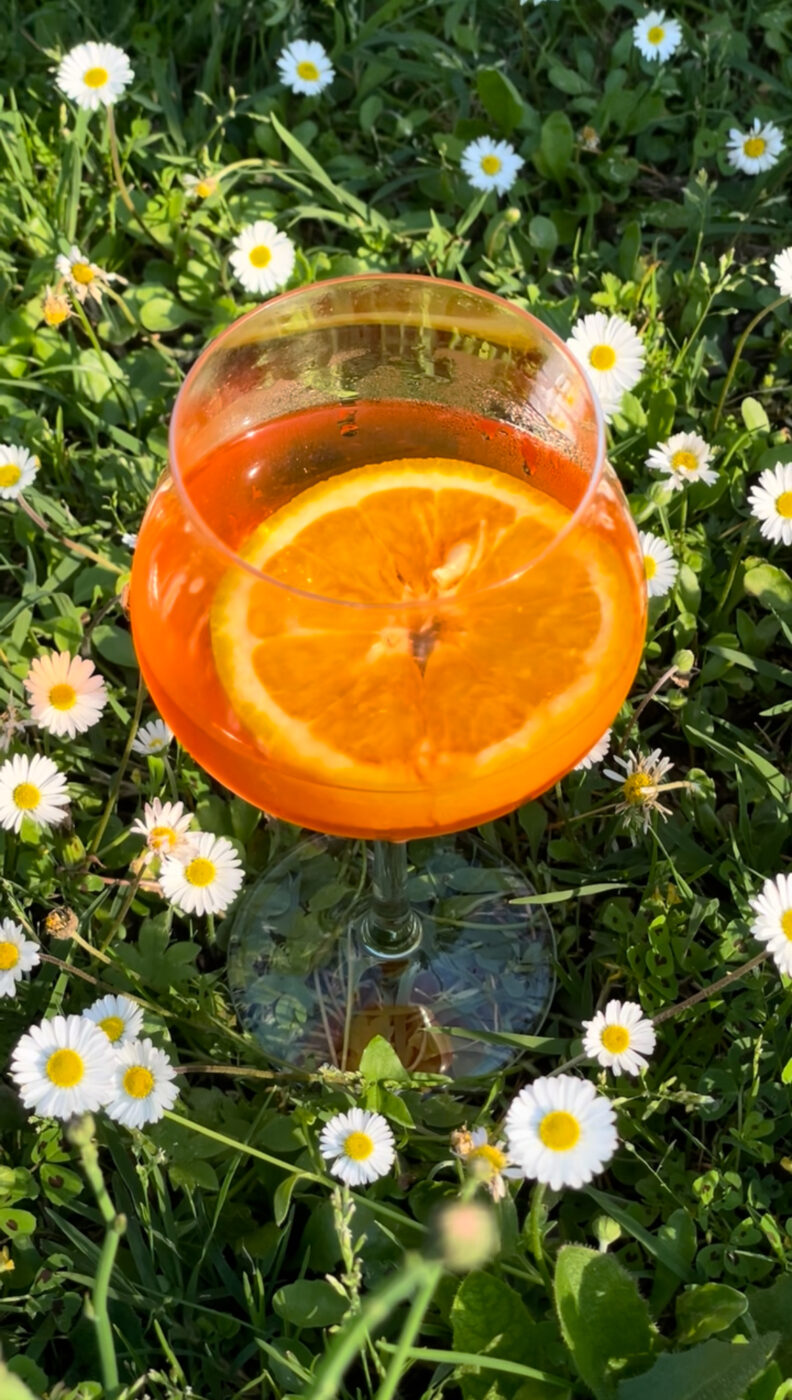Love it or loathe it, covet it or condemn it, there is no denying the ubiquitous influence of the Aperol spritz. This evocative Italian drink has earned its place as one of the world’s most popular cocktails. Balmy summer evenings in a Mediterranean milieu are brightened by the orange glow of sunsets and spritzes alike, and it’s hard to come by an Italian bar, piazza, or beachside that isn’t punctuated by multitudes of condensation-covered glasses radiating with Aperol’s vibrant hue.
Instantly recognizable by its vivid orange hue, Aperol is a bittersweet liqueur from Italy’s Veneto region. The spritz as we know it—Aperol, Prosecco, soda water, ice, and a slice of orange—has been a Venetian staple for over a century, though its global popularity is more recent.
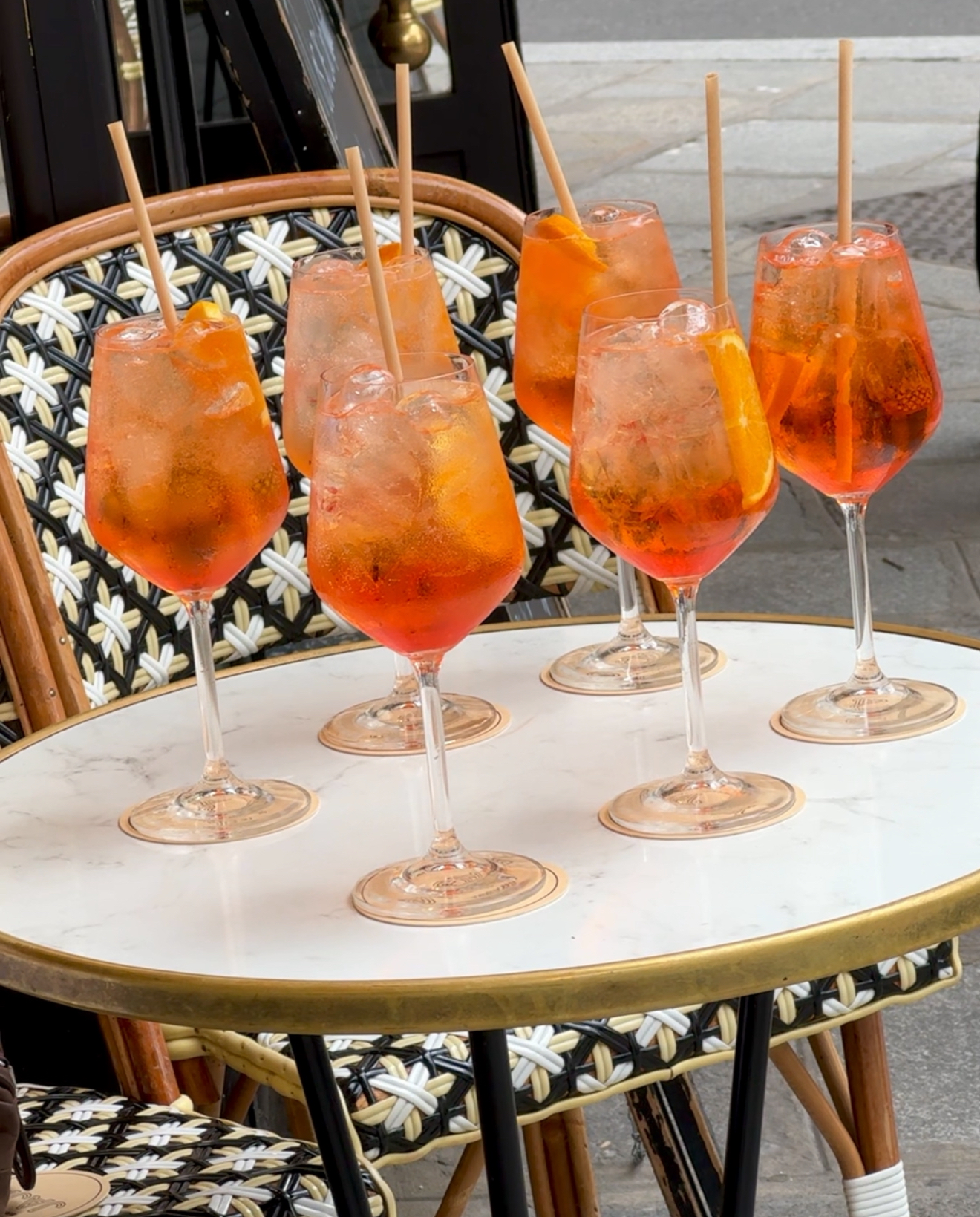
Thanks in part to slick marketing and the tagline “Together We Joy,” the drink is now positioned as a symbol of shared pleasure. But the origins of the spritz tell a more complex story—one that begins not with Aperol itself, but in the early 19th century, long before the idea for Aperol had begun to brew in the minds of the Barbieri brothers from Padova who would go on to invent it.
After the collapse of the Napoleonic Empire in 1815, a power vacuum throughout Europe left the continent’s remaining superpowers scrambling to occupy the lands lost by French forces. Italy’s northern regions of Lombardy and Venetia fell into the hands of the Austrian Empire and, by the end of the year, its soldiers had settled themselves into their new territory. Adjusting to life south of the border wasn’t easy, however—especially when it came to Italian drinking habits. Used to lighter, lower-alcohol wines, Austrian palates found the strong, full-bodied flavors from Italy’s vines overwhelming. Their solution was a splash of still water in their wine—“ein Spritzer,” as they called it in German.
When the Italian regions gained independence later in the 19th century, the Austrian soldiers departed, but their drinking habits remained. Soon, the “spritzer” of still water was replaced by soda water and, at the start of the 20th century, liqueurs and spirits took over from wine. Enter Luigi and Silvio Barbieri of Padova, who inherited their father’s distillery and set out to create a new liqueur—one inspired by the local trend and the aperitifs they’d encountered on holidays in France.
They spent seven years perfecting the recipe and debuted Aperol at the 1919 Padova World Fair. The name “Aperol” riffs on the French word apéritif (adapted in Italian as aperitivo), referring to the ritual of pre-dinner drinking to stimulate the appetite. “Spritz,” on the other hand, nods to the Austrian soldiers who, over 200 years earlier, had unknowingly invented a new kind of mixed drink. The Aperol spritz is simply a more colorful continuation of that habit and its name a tribute to the drink’s international influences.

Photo by @SeaSoulDiary
It may come as a surprise that the Aperol spritz traces its roots to 1815, given its branding rooted in 20th-century Art Nouveau and the cosmopolitan boom of post-war Italy. Marketed early on as a liqueur of refined leisure for after work, Aperol’s relatively low price point made it accessible to the wider public. That affordability remains central to its identity—and likely explains its global ubiquity today.
Aperol connoisseur and Spritz (2016) coauthor Talia Baiocchi puts it best: “It isn’t a luxury item; it’s a cultural right.” Still, not everyone’s convinced. Some dismiss the spritz as too sweet, too simple, lacking the nuance of more serious liqueurs. But, I argue, to over analyze the Aperol spritz is to miss the point entirely. The Aperol spritz isn’t a complex drink, and it was never meant to be. Rather, it appeals to the masses and doesn’t require (nor desire) a trained or sophisticated palate to tease out intricate flavors.
And you don’t need a sommelier to tell you what food best accompanies your spritz. In fact, all that should be served alongside one is a bowl of salted peanuts or chips, hastily banged on the table by a bartender already dashing off to serve the other customers who have inevitably ordered the same orange drink as you.

